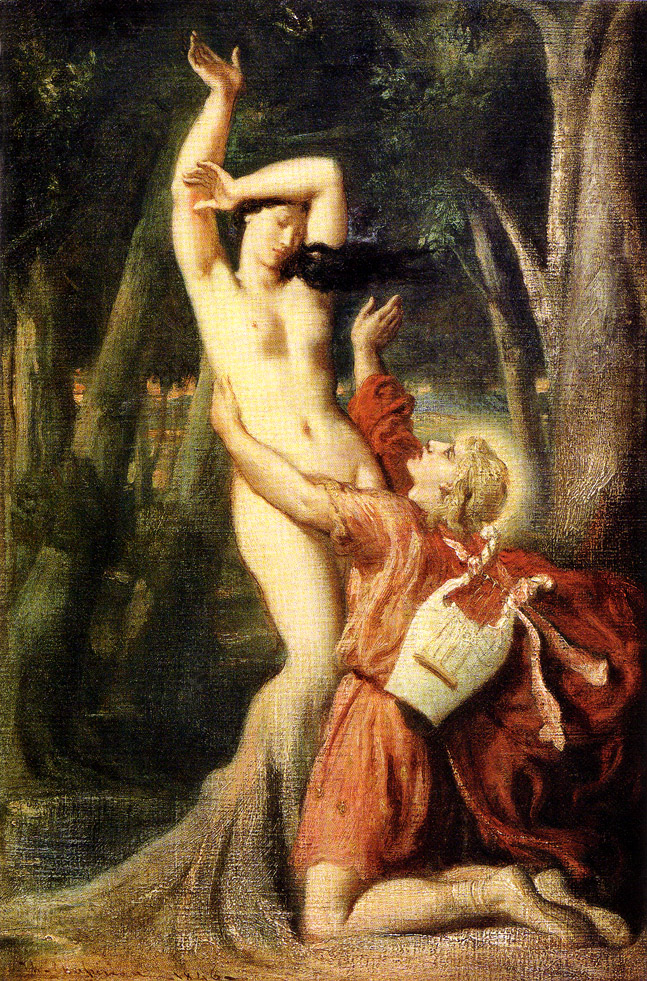Théodore Chassériau, Apollo and Daphne, 1845
Théodore Chassériau (1819-1856) was a French romantic painter who worked in a number of genres. Chassériau was born in Santo Domingo (now Dominican Republic) to a French adventurer and statesman and the daughter of a mulatto landowner. The family moved to Paris in 1821, and Chassériau soon developed exceptional drawing schools. At age eleven, he was accepted into the studio of Jean-Auguste-Dominique Ingres, who came to regard him as his favorite pupil and truest disciple. However, when Ingres moved to Rome in 1834, Chassériau fell under the influence of Ingres's great rival, Eugène Delacroix. In Chassériau's work we can see the attempt to combine Ingres's Classicism with Delacroix's Romanticism. Chassériau became known for his history painting, depicting mythological, religious, historical, and literary subjects. Like Delacroix, he also took up Orientalism. Perhaps his most famous painting is The Toilette of Esther (1841). Apollo and Daphne of course depicts the Greek myth of the same name. Apollo fell in love with the nymph Daphne (in some versions due to a retaliatory arrow from Cupid), and Daphne flees from the god. She preys to her father, a river god, for help and he transforms her into the first laurel tree on the spot. Thereafter, his love never waning, laurel leaves became sacred to Apollo. This myth is a particular favorite of artists (the two most famous versions perhaps being Bernini's statue and John William Waterhouse's painting). Chassériau's version is a beautiful rendition of the story. One noteworthy difference is that Chassériau depicts Daphne's transformation beginning with her feet becoming roots and trunk, whereas most portrayals begin the transformation at the top with her hair and fingers. Chassériau seized on the part of the myth where Daphne becomes rooted to the spot. However, what is extraordinary about this decision is that he nevertheless depicts her body like a tree. Daphne's arms stretch above her head like branches, her hair blows in the breeze like leaves, and her body curves and sways like a tree trunk. This transformation is not merely an external one, but also takes place within Daphne; she becomes the tree in every way.

No comments:
Post a Comment